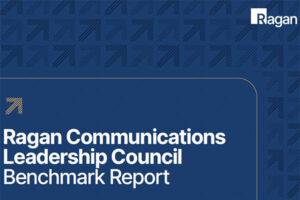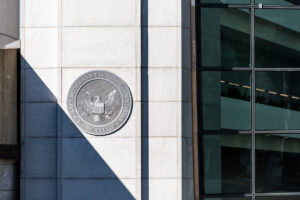Navigating sustainability reporting with a global stakeholder set
A closer look at what the new SEC rules focus on, and what they don’t, offers larger lessons on emissions reporting for global communicators.

New Securities and Exchange Commission (SEC) emissions reporting standards were approved that walk back much of what was initially proposed in 2022, reports CNBC:
The new rules, which was approved by commissioners in a 3-2 vote, will require large public companies to disclose some aspects of their carbon footprints and also lay out for investors how climate change could put aspects of their businesses at risk. In comparison to earlier draft versions of the rules, the finalized rules will require fewer businesses to comply and also won’t require most indirect carbon emissions to be disclosed.
This forces those leading global communication efforts to do a tricky dance as they navigate varying levels of sustainability reporting across regions and vastly different stakeholder sets. On top of that, the politicized nature of ESG reporting creates a paradox for companies—comply with the more stringent EU reporting standards globally and risk having efforts politicized by polarized U.S. congressional leaders.
The paradox was also evident when Wall Street firms like JPMorgan, Pimco and State Street exited Climate Action 100+, a green investing group, and walked back sustainability commitments just as other organizations doubled down on sustainability comms.
A closer look at what the new SEC rules focus on, and what they don’t, offers larger lessons on emissions reporting for global communicators.
What the new rules do (and what they don’t)
The SEC rules notably do not offer a tangible reporting standard that organizations should follow, but they’re a start.
The rules primarily require disclosure for Scope 1 emissions, which refers to the “direct” emissions that a company produces during the course of operations. This can include emissions from machinery and production, vehicles, heating buildings or powering infrastructure.
But the rules also require large companies to disclose some indirect emissions that fall under Scope 2, which covers emissions created by producing energy that an organization buys elsewhere. Generating electricity used by fossil fuels, for example, would fall under this scope.
Scope 3 emissions, which include indirect emissions produced by customers using a company’s products or suppliers, are not included in the rules at all. Those are also the hardest to track.
Days after these rules were ratified, Unilever announced updates to its climate action plan that targeted Scope 3 emissions reductions. The consumer goods company plans to reduce indirect emissions by 42%, measured against a 2021 baseline.
Minimizing inherent risk
For Michael Constantine, marketing director for Ragan Communications Leadership Council member ING Americas, working for a leader in sustainable finance means understanding what puts businesses at risk.
“There’s another gravitational pull here, and that’s risk,” he said. “If companies don’t show that they’re transitioning, that they’re going to be resilient to climate change.”
On one hand, Constantine sees investors worried about perceptions in certain U.S. states. On the corporate side, there’s also an understanding that businesses want to invest in companies that are set up for the future.
While the SEC doesn’t codify a firm standard for reporting, setting a precedent will still allow organizations to compare and contrast their emissions reporting strategies.
“Is it mitigating risk? No, but it’s almost trying to understand the risk,” Constantine said. “It’s that old adage of ‘you can’t manage what you can’t measure.’”
What this means for global communicators
Communicators working across global regions and markets understand that the EU reporting standards go much further than the SEC’s. And the resistance to implementing tangible Scope 3 reporting will not excuse global organizations from reporting on those metrics internationally.
Constantine expects something similar to what happened with the General Data Protection Regulation (GDPR), a European data protection regulation that was required to be followed by any organization with operations in Europe. Eventually, the California Consumer Privacy Act became a domestic iteration on GDPR rules.
He remembers hearing from a large logistics company that spoke about its emissions reporting at a conference last year.
“They were already doing Scope 1 and Scope 2 by default, but the California Climate Risk law added Scope 3,” Constantine said. “For a logistical company and what it does, that must have been 90% more reporting than what they were doing today. [The SEC rules] were always going to be a bit watered down. In terms of scopes 1 and 2, the EU’s initiative goes so much further and will impact U.S. companies regardless.”
But following the most stringent regulations, there’s the risk to being criticized by U.S. partners as being ‘woke’ or otherwise politicized.
The right words and phrases
Some of this comes down to the language, phrases and framing used to tell your sustainability story. A recent Wall Street Journal feature credits Blackrock, the world’s largest asset manager, with no longer framing its sustainability efforts as “ESG” and instead describing its sustainability spend as “transition investing.”
“This is where marketing comms professionals come in,” Constantine said. “There’s actually quite a lot of stake in what words are used and where they are used. Certain things like CSRD (reporting) in the EU will become the gold standard.”
There are always legal implications that communicators should consult counsel on, and stigmas associated with certain words require added sensitivity from comms. Constantine has seen language shift more toward a focus on “impact” on the investor side.
“I think it’s better,” he said, “because if you’re just investing in pure play green (which refers to investments that derive all or most of their revenues and profits from green business activities), you’re not moving the needle. If you can actually show how you’ve managed to move companies on, ‘impact’ is a much better word to demonstrate. You’re making that positive change.”
Constantine also cites “natural capital” as a powerful tool here. “How do you argue against nature?” he asked rhetorically. “Who on what side of the House is going to say they’re anti-nature? There are spaces in the sustainability story that no one can argue with.”
What’s next
Ultimately, having more points to measure and compare will be a growing pain for companies, but ultimately a profound opportunity to reinforce trust.
“It’s going to be harder for some companies to put out that little sustainability report when they have to measure up against competitors,” Constantine said. “It’s a really complicated area, but people are starting to realize that and dig into it—realizing that establishing benchmarks is a way you build trust.”
Benchmarking has long been an empty gesture for many organizations with 2030 and 2050 zero-emissions pledges. But once you start actively tracking your progress and have data for each stop along the way, those touchpoints shape a narrative that you can activate along your ESG journey.
“That kind of thing was always a bit frustrating,” Constantine said. “Large consumer companies with 2050 goals and no accountability up until that point. We put that on the wall as a goal, but what does that mean? Having data along the route is massively more powerful.”
For more information on how to access the full story and become a member of Ragan’s Communications Leadership Council, reach out here.







